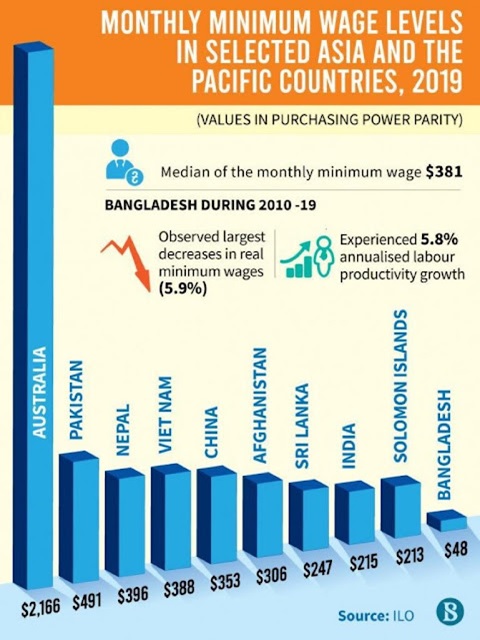How Many Hours of Work Buys an iPhone 12 in India, Pakistan?
By Riaz Haq
CA
It takes an Indian minimum wage worker twice as long to afford an Apple iPhone 12 as his Pakistani counterpart. A minimum-wage Pakistani has to work 1,642 hours, or about 10 months of work, to buy an iPhone 12, according to Bloomberg News. An Indian minimum worker, on the other hand, must work nearly twice as long, a total of 3,254 hours, to buy it. It takes 1,791 hours in Indonesia and 2,045 hours in Egypt. Assuming a 40-hour workweek and two weeks of vacation, there are 2,000 hours of work in a year. Given these figures, it can be safely assumed that very few minimum wage workers in the developing world can afford to buy an iPhone 12.

Hours of Work Needed to Buy iPhone 12. Source: Bloomberg
Bloomberg reported the following on February 4: "Based on minimum wage levels, a new report from Grover.com estimates it would take 6,639 hours for a Venezuelan to earn enough for the prized smartphone and 3,254 hours for an Indian. Chinese people must work 680 hours to make enough money".

Minimum wage in selected countries. Source: ILO via The Business Standard
International Labor Organization's Global Wage Report 2020-21 reported that the minimum wage in Pakistan is $491 a month in purchasing power parity, the highest in South Asia. India's minimum wage is $215 a month, less than half of Pakistan's.
India is one of the most unequal countries in the world, according to the World Inequality Report 2022. There is rising poverty and hunger. Nearly 230 million middle class Indians have slipped below the poverty line, constituting a 15 to 20% increase in poverty. India ranks 94th among 107 nations ranked by World Hunger Index in 2020. Other South Asians have fared better: Pakistan (88), Nepal (73), Bangladesh (75), Sri Lanka (64) and Myanmar (78) – and only Afghanistan has fared worse at 99th place. Meanwhile, the wealth of Indian billionaires has jumped by 35% during the pandemic.
Neoliberal policies in emerging markets like India have spurred economic growth in last few decades. However, the gains from this rapid growth have been heavily skewed in favor of the rich. The rich have gotten richer while the poor have languished. The average per capita income in India has tripled in recent decades but the minimum dietary intake has fallen. According to the World Food Program, a quarter of the world's undernourished people live in India. The COVID19 pandemic has further widened the gap between the rich and the poor.
(Riaz Haq is a Silicon Valley-based Pakistani-American analyst and writer. He blogs at www.riazhaq.com)

